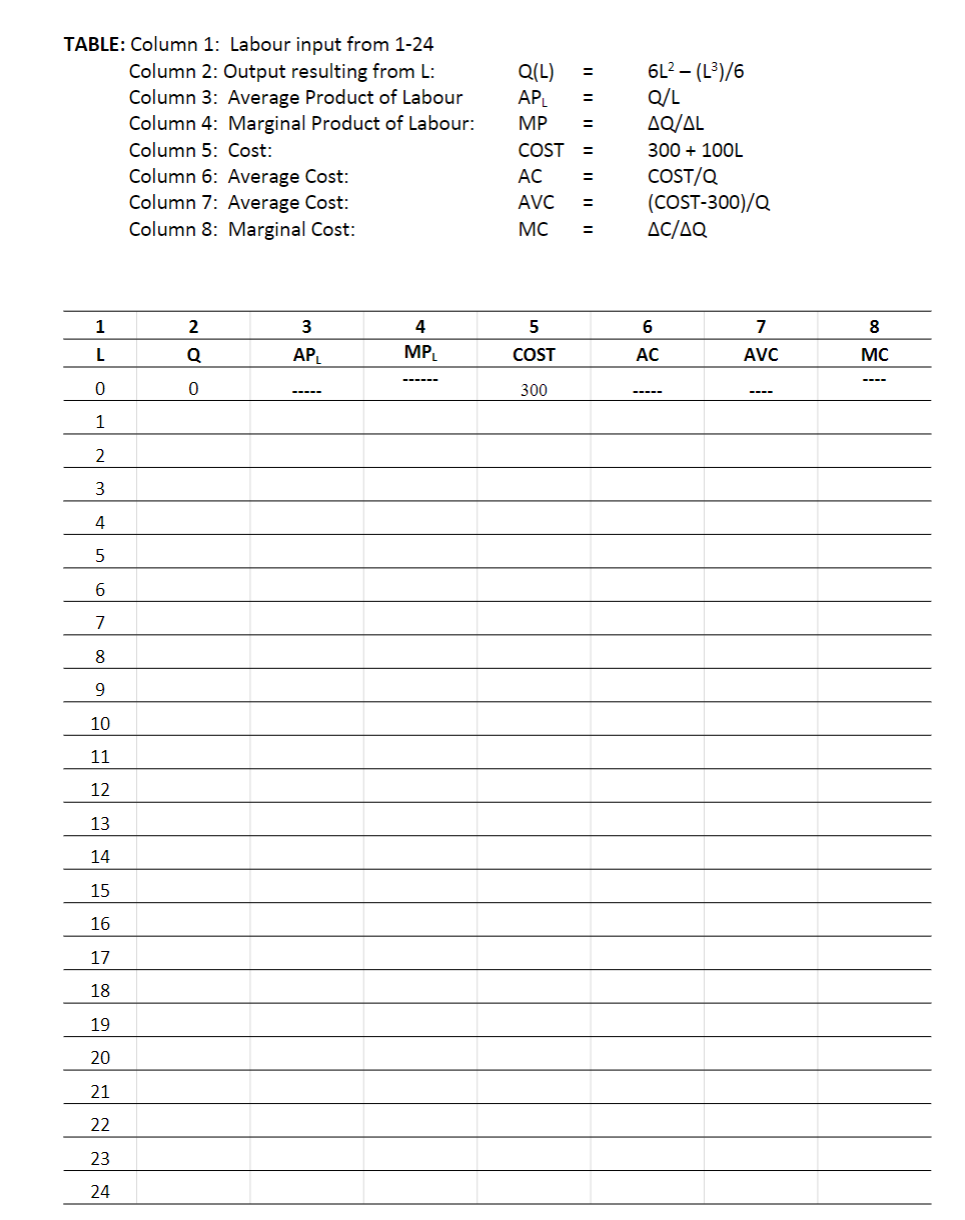Question
Q1: (10 points) Let Q(L) = 6L2 - (L3)/6 with costs = 300 + 100L. a) Complete the table on the next page. You can
Q1: (10 points) Let Q(L) = 6L2 - (L3)/6 with costs = 300 + 100L. a) Complete the table on the next page. You can do this in excel or by hand. b) Why is L = 25 or larger not something we should consider? c) Confirm that APL is maximized where MPL = APL. (You can plot APL and MPL versus L. Or you can use the table directly. Find the maximum APL. For labour below this we should see MPL > APL. For labour above we should see MPL
Q2: (10 points) Consider a firm that employs capital and labour and uses the production technology Q = min[K, L] (think of taxi cabs: you need exactly one car and one driver per taxi). Factor prices are r for capital and w for labour. a) Draw the isoquant for Q = 100. b) Does this production function exhibit increasing, constant, or decreasing returns to scale? Show/explain. c) What is the optimal relationship between K and L? What is the input demand for Labour (L as a function of Output) and the input demand for Capital? d) Derive the long-run cost function: (eg C = wL + rK where L and K are optimal choices). e) What is the long-run marginal and average cost function with r = 4 and w = 4? f) What is the cost of Q=100? Q= 200? g) Does this cost function exhibit increasing, constant, or decreasing economies of scale?
Q3: (10 points) Consider the following production function: Q = K1/3 L1/3 with rental costs r and labour costs w. a) Draw the isoquant for Q = 100. b) Does this production function exhibit increasing, constant, or decreasing returns to scale? Show/explain. c) Let K be variable. What is the optimal relationship between K and L: (hint: MRTS = L/K) d) What is the input demand for Labour (as a function of Output) and the input demand for Capital? e) Derive the long-run cost function. (eg C = wL + rK where L and K are optimal choices). f) Plot the cost function given w = $20 and r = $10. g) Calculate the long-run costs for Q = 100. Q = 200. h) Does this cost function exhibit increasing, constant, or decreasing economies of scale?

Step by Step Solution
There are 3 Steps involved in it
Step: 1

Get Instant Access to Expert-Tailored Solutions
See step-by-step solutions with expert insights and AI powered tools for academic success
Step: 2

Step: 3

Ace Your Homework with AI
Get the answers you need in no time with our AI-driven, step-by-step assistance
Get Started


